Graphene and 2D Hexagonal Boron Nitride Heterostructure for Thermal Management in Actively Tunable Manner
Abstract
1. Introduction
2. Materials and Methods
2.1. Simulation Details and Model Setup
2.2. Calculation of Interfacial Thermal Conduction
2.3. Study of Thermal Rectification Mechanisms and Phonon Properties
3. Results and Discussion
3.1. Analysis of the Thermal Rectification Mechanism
3.2. Length Dependence of Thermal Rectification Ratio
4. Conclusions
Author Contributions
Funding
Data Availability Statement
Acknowledgments
Conflicts of Interest
References
- Behura, S.K.; Wang, C.; Wen, Y.; Berry, V. Graphene–semiconductor heterojunction sheds light on emerging photovoltaics. Nat. Photonics 2019, 13, 312–318. [Google Scholar] [CrossRef]
- Sood, A.; Xiong, F.; Chen, S.; Wang, H.; Selli, D.; Zhang, J.; McClellan, C.J.; Sun, J.; Donadio, D.; Cui, Y. An electrochemical thermal transistor. Nat. Commun. 2018, 9, 4510. [Google Scholar] [CrossRef] [PubMed]
- Saira, O.-P.; Meschke, M.; Giazotto, F.; Savin, A.M.; Möttönen, M.; Pekola, J.P. Heat transistor: Demonstration of gate-controlled electronic refrigeration. Phys. Rev. Lett. 2007, 99, 027203. [Google Scholar] [CrossRef] [PubMed]
- Chang, C.W.; Okawa, D.; Majumdar, A.; Zettl, A. Solid-state thermal rectifier. Science 2006, 314, 1121–1124. [Google Scholar] [CrossRef] [PubMed]
- Li, B.; Wang, L.; Casati, G. Thermal diode: Rectification of heat flux. Phys. Rev. Lett. 2004, 93, 184301. [Google Scholar] [CrossRef]
- Wehmeyer, G.; Yabuki, T.; Monachon, C.; Wu, J.; Dames, C. Thermal diodes, regulators, and switches: Physical mechanisms and potential applications. Appl. Phys. Rev. 2017, 4, 041304. [Google Scholar] [CrossRef]
- Auton, G.; Zhang, J.; Kumar, R.K.; Wang, H.; Zhang, X.; Wang, Q.; Hill, E.; Song, A. Graphene ballistic nano-rectifier with very high responsivity. Nat. Commun. 2016, 7, 11670. [Google Scholar] [CrossRef]
- Chen, J.; Xu, X.; Zhou, J.; Li, B. Interfacial thermal resistance: Past, present, and future. Rev. Mod. Phys. 2022, 94, 025002. [Google Scholar] [CrossRef]
- Lan, J.; Li, B. Thermal rectifying effect in two-dimensional anharmonic lattices. Physical Review B 2006, 74, 214305. [Google Scholar] [CrossRef]
- Ma, H.; Tian, Z. Significantly high thermal rectification in an asymmetric polymer molecule driven by diffusive versus ballistic transport. Nano Lett. 2018, 18, 43–48. [Google Scholar] [CrossRef]
- Mayorov, A.S.; Gorbachev, R.V.; Morozov, S.V.; Britnell, L.; Jalil, R.; Ponomarenko, L.A.; Blake, P.; Novoselov, K.S.; Watanabe, K.; Taniguchi, T. Micrometer-scale ballistic transport in encapsulated graphene at room temperature. Nano Lett. 2011, 11, 2396–2399. [Google Scholar] [CrossRef]
- Chen, X.-K.; Hu, J.-W.; Wu, X.-J.; Jia, P.; Peng, Z.-H.; Chen, K.-Q. Tunable thermal rectification in graphene/hexagonal boron nitride hybrid structures. J. Phys. D Appl. Phys. 2018, 51, 085103. [Google Scholar] [CrossRef]
- Chen, X.-K.; Xie, Z.-X.; Zhang, Y.; Deng, Y.-X.; Zou, T.-H.; Liu, J.; Chen, K.-Q. Highly efficient thermal rectification in carbon/boron nitride heteronanotubes. Carbon 2019, 148, 532–539. [Google Scholar] [CrossRef]
- Gao, Y.; Xu, B. Controllable interface junction, in-plane heterostructures capable of mechanically mediating on-demand asymmetry of thermal transports. ACS Appl. Mater. Interfaces 2017, 9, 34506–34517. [Google Scholar] [CrossRef]
- Ni, X.; Zhang, G.; Li, B. Thermal conductivity and thermal rectification in unzipped carbon nanotubes. J. Phys. Condens. Matter. 2011, 23, 215301. [Google Scholar] [CrossRef]
- Tabarraei, A. Thermal conductivity of monolayer hexagonal boron nitride nanoribbons. Comput. Mater. Sci. 2015, 108, 66–71. [Google Scholar] [CrossRef]
- Xu, X.; Pereira, L.F.; Wang, Y.; Wu, J.; Zhang, K.; Zhao, X.; Bae, S.; Tinh Bui, C.; Xie, R.; Thong, J.T. Length-dependent thermal conductivity in suspended single-layer graphene. Nat. Commun. 2014, 5, 3689. [Google Scholar] [CrossRef]
- Vallabhaneni, A.K.; Qiu, B.; Hu, J.; Chen, Y.P.; Roy, A.K.; Ruan, X. Interfacial thermal conductance limit and thermal rectification across vertical carbon nanotube/graphene nanoribbon-silicon interfaces. J. Appl. Phys. 2013, 113, 064311. [Google Scholar] [CrossRef]
- Song, J.; Xu, Z.; He, X. Thermal energy transport across the graphene/C3N interface. Int. J. Heat Mass Transfer. 2020, 157, 119954. [Google Scholar] [CrossRef]
- Ding, Z.; Pei, Q.-X.; Jiang, J.-W.; Huang, W.; Zhang, Y.-W. Interfacial thermal conductance in graphene/MoS2 heterostructures. Carbon 2016, 96, 888–896. [Google Scholar] [CrossRef]
- Zhang, Y.; Pei, Q.-X.; Wang, C.-M.; Yang, C.; Zhang, Y.-W. Interfacial thermal conductance and thermal rectification of hexagonal BC n N/graphene in-plane heterojunctions. J. Phys. Chem. C 2018, 122, 22783–22789. [Google Scholar] [CrossRef]
- Zhang, Y.; Lv, Q.; Wang, H.; Zhao, S.; Xiong, Q.; Lv, R.; Zhang, X. Simultaneous electrical and thermal rectification in a monolayer lateral heterojunction. Science 2022, 378, 169–175. [Google Scholar] [CrossRef] [PubMed]
- Zhuang, S.; Liu, Y. Interface-Controlled Thermal Rectification Phenomenon of Monolayer Graphene/Boron Nitride Heterosheet. J. Phys. Chem. Lett. 2020, 11, 9731–9737. [Google Scholar] [CrossRef] [PubMed]
- Chen, X.-K.; Xie, Z.-X.; Zhou, W.-X.; Tang, L.-M.; Chen, K.-Q. Thermal rectification and negative differential thermal resistance behaviors in graphene/hexagonal boron nitride heterojunction. Carbon 2016, 100, 492–500. [Google Scholar] [CrossRef]
- Diao, C.; Dong, Y.; Lin, J. Reactive force field simulation on thermal conductivities of carbon nanotubes and graphene. Int. J. Heat Mass Transfer 2017, 112, 903–912. [Google Scholar] [CrossRef]
- Diao, C.; Yang, Z.; Dong, Y.; Duan, Y. Ballistic-diffusive phonon transport and thermal rectification across single-molecule junctions. Int. J. Heat Mass Transfer 2020, 157, 119851. [Google Scholar] [CrossRef]
- Dong, R.-Y.; Dong, Y.; Li, Q.; Wan, C. Ballistic-diffusive phonon transport in cellulose nanocrystals by ReaxFF molecular dynamics simulations. Int. J. Heat Mass Transfer 2020, 148, 119155. [Google Scholar] [CrossRef]
- Dong, Y.; Diao, C.; Song, Y.; Chi, H.; Singh, D.J.; Lin, J. Molecular bridge thermal diode enabled by vibrational mismatch. Phys. Rev. Appl. 2019, 11, 024043. [Google Scholar] [CrossRef]
- Dong, Y.; Meng, M.; Groves, M.M.; Zhang, C.; Lin, J. Thermal conductivities of two-dimensional graphitic carbon nitrides by molecule dynamics simulation. Int. J. Heat Mass Transfer 2018, 123, 738–746. [Google Scholar] [CrossRef]
- Rismiller, S.C.; Groves, M.M.; Meng, M.; Dong, Y.; Lin, J. Water assisted liquefaction of lignocellulose biomass by ReaxFF based molecular dynamic simulations. Fuel 2018, 215, 835–843. [Google Scholar] [CrossRef]
- Rani, P.; Jindal, V. Designing band gap of graphene by B and N dopant atoms. RSC Adv. 2013, 3, 802–812. [Google Scholar] [CrossRef]
- Dresselhaus, M.S.; Dresselhaus, G.; Eklund, P.C. Science of Fullerenes and Carbon Nanotubes: Their Properties and Applications; Elsevier: Amsterdam, The Netherlands, 1996. [Google Scholar]
- Plimpton, S. Fast parallel algorithms for short-range molecular dynamics. J. Comput. Phys. 1995, 117, 1–19. [Google Scholar] [CrossRef]
- Ikeshoji, T.; Hafskjold, B. Non-equilibrium molecular dynamics calculation of heat conduction in liquid and through liquid-gas interface. Mol. Phys. 1994, 81, 251–261. [Google Scholar] [CrossRef]
- Hong, Y.; Zhang, J.; Zeng, X.C. Thermal contact resistance across a linear heterojunction within a hybrid graphene/hexagonal boron nitride sheet. Phys. Chem. Chem. Phys. 2016, 18, 24164–24170. [Google Scholar] [CrossRef]
- Kınacı, A.; Haskins, J.B.; Sevik, C.; Çağın, T. Thermal conductivity of BN-C nanostructures. Phys. Rev. B 2012, 86, 115410. [Google Scholar] [CrossRef]
- Bae, M.-H.; Li, Z.; Aksamija, Z.; Martin, P.N.; Xiong, F.; Ong, Z.-Y.; Knezevic, I.; Pop, E. Ballistic to diffusive crossover of heat flow in graphene ribbons. Nat. Commun. 2013, 4, 1734. [Google Scholar] [CrossRef]
- Balandin, A.A. Thermal properties of graphene and nanostructured carbon materials. Nat. Mater. 2017, 10, 569–581. [Google Scholar] [CrossRef]
- Karak, S.; Paul, S.; Negi, D.; Poojitha, B.; Srivastav, S.K.; Das, A.; Saha, S. Hexagonal Boron Nitride–Graphene Heterostructures with Enhanced Interfacial Thermal Conductance for Thermal Management Applications. ACS Appl. Nano Mater. 2021, 4, 1951–1958. [Google Scholar] [CrossRef]
- Li, T.; Tang, Z.; Huang, Z.; Yu, J. Substrate effects on the thermal performance of in-plane graphene/hexagonal boron nitride heterostructures. Carbon 2018, 130, 396–400. [Google Scholar] [CrossRef]
- Wang, J.; Mu, X.; Wang, X.; Wang, N.; Ma, F.; Liang, W.; Sun, M. The thermal and thermoelectric properties of in-plane C-BN hybrid structures and graphene/h-BN van der Waals heterostructures. Mater. Today Phys. 2018, 5, 29–57. [Google Scholar] [CrossRef]
- Zhao, S.; Zhou, Y.; Wang, H. Review of thermal rectification experiments and theoretical calculations in 2D materials. Int. J. Heat Mass Transfer 2022, 195, 123218. [Google Scholar] [CrossRef]
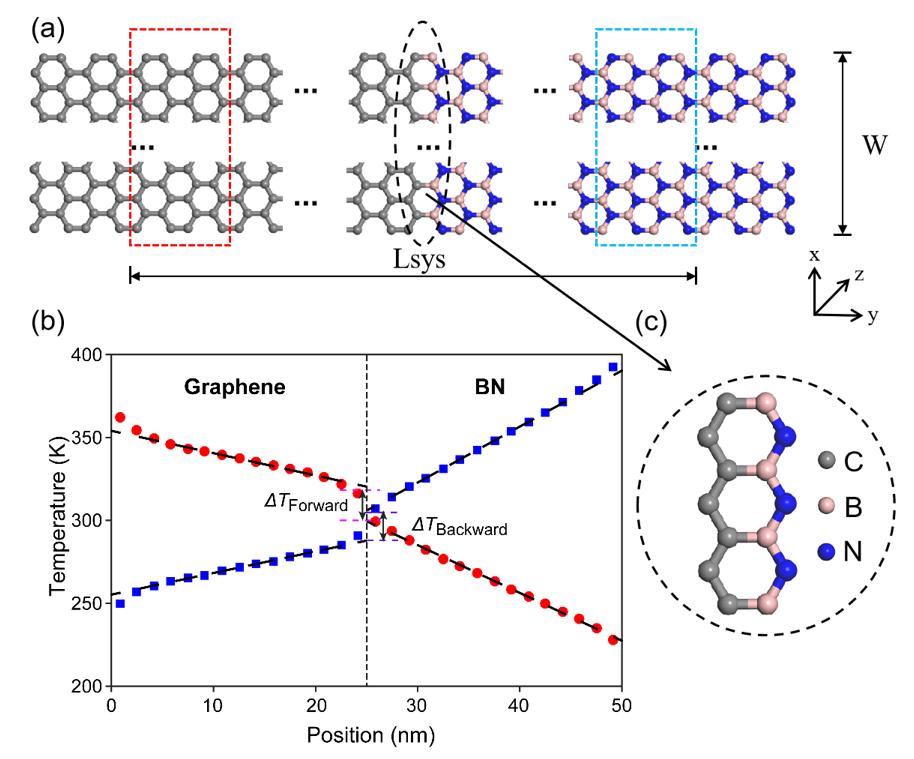
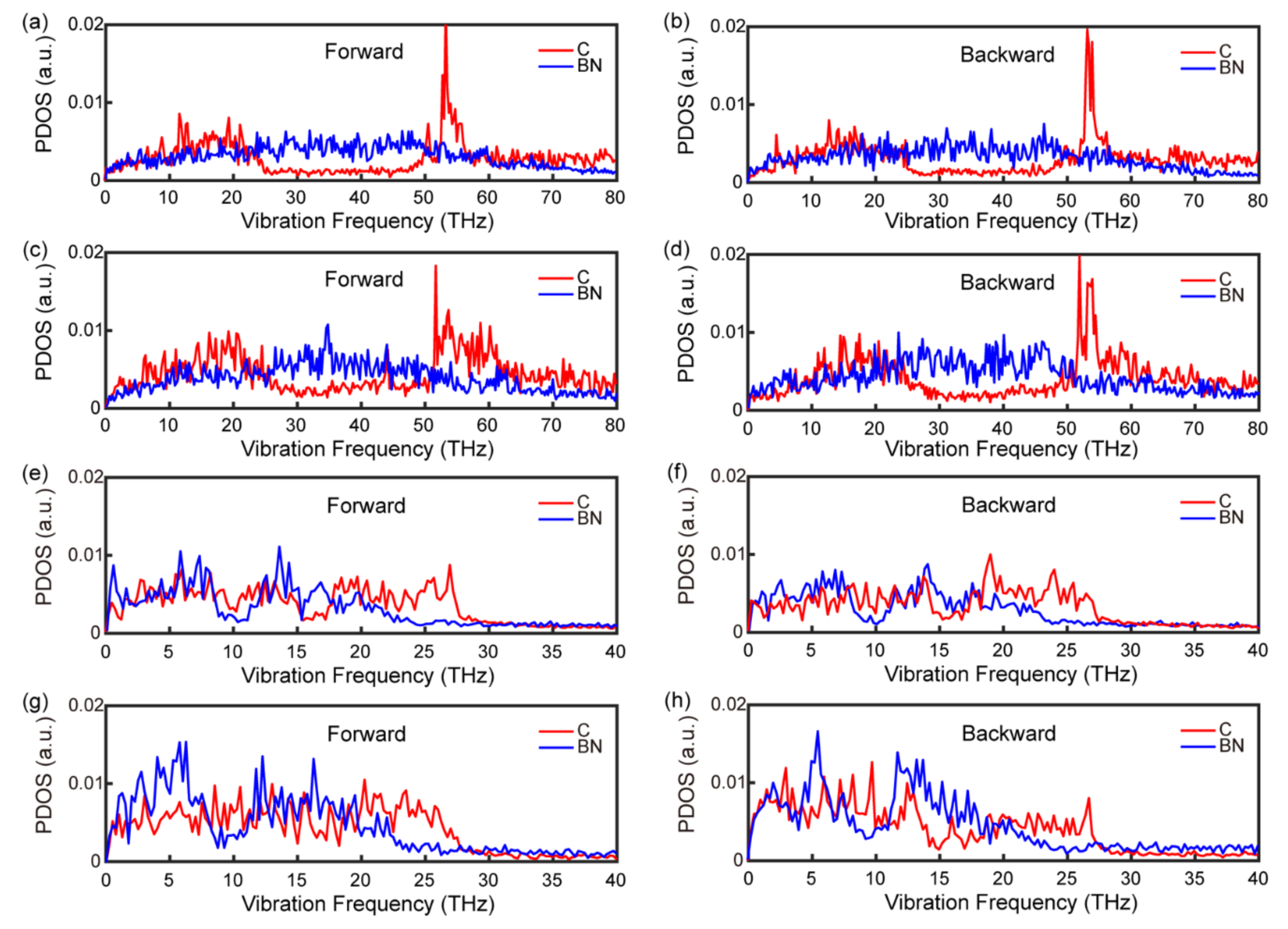
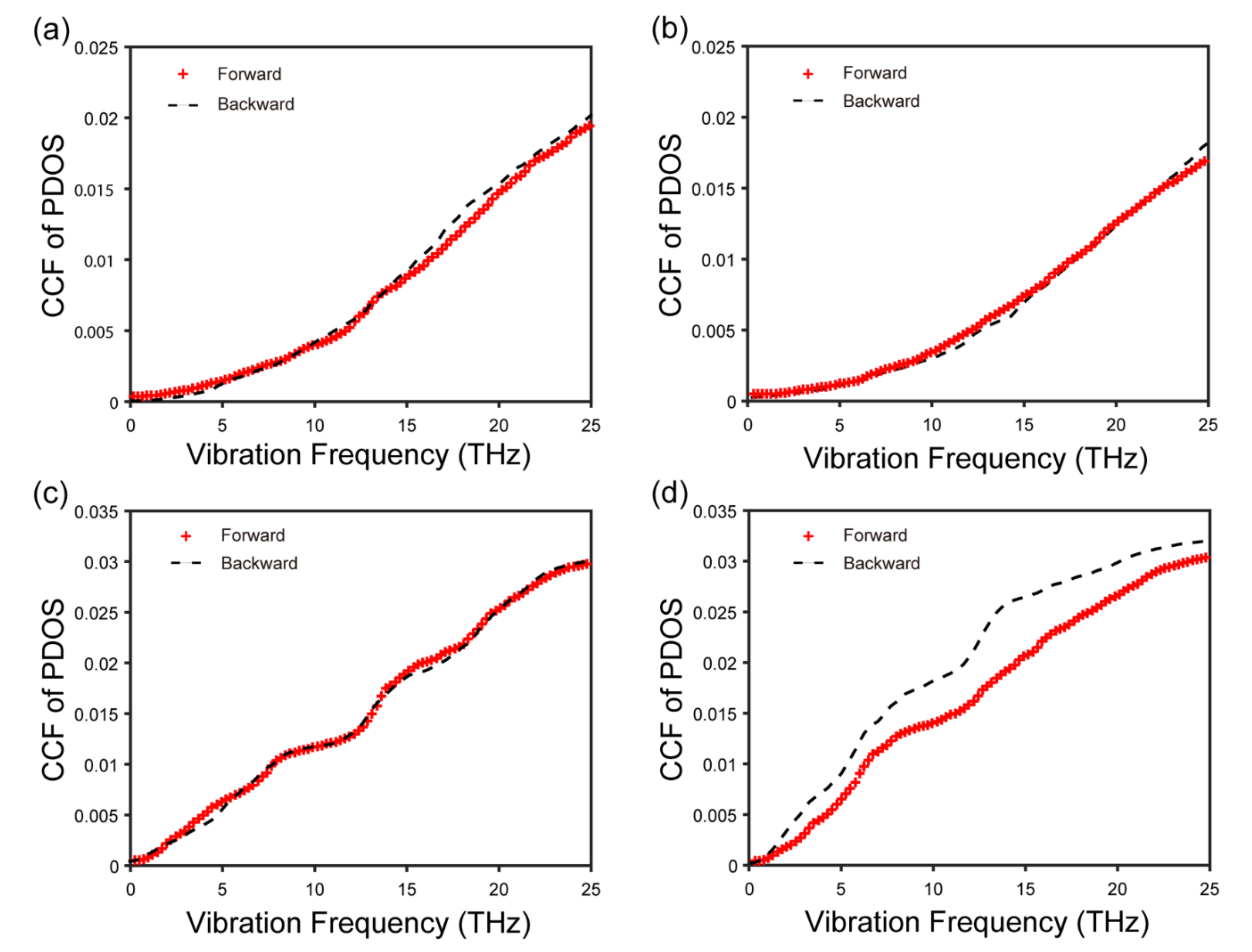
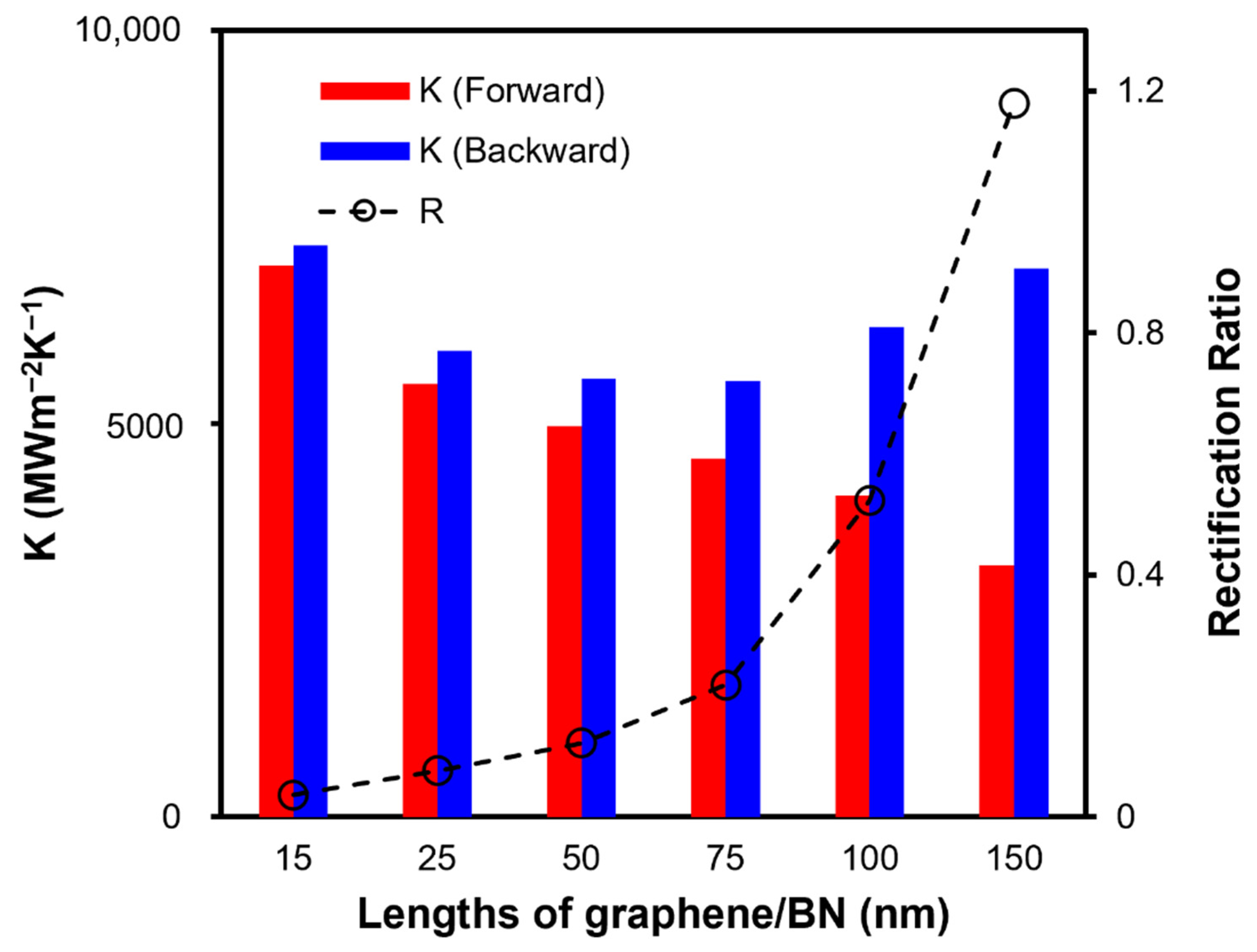
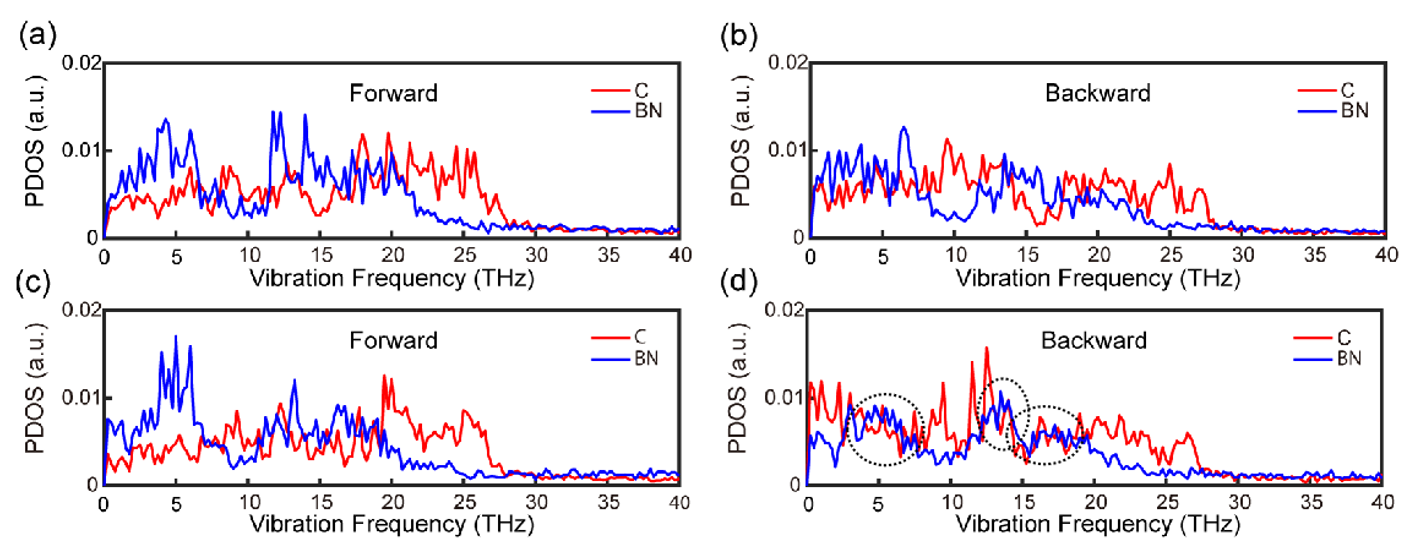
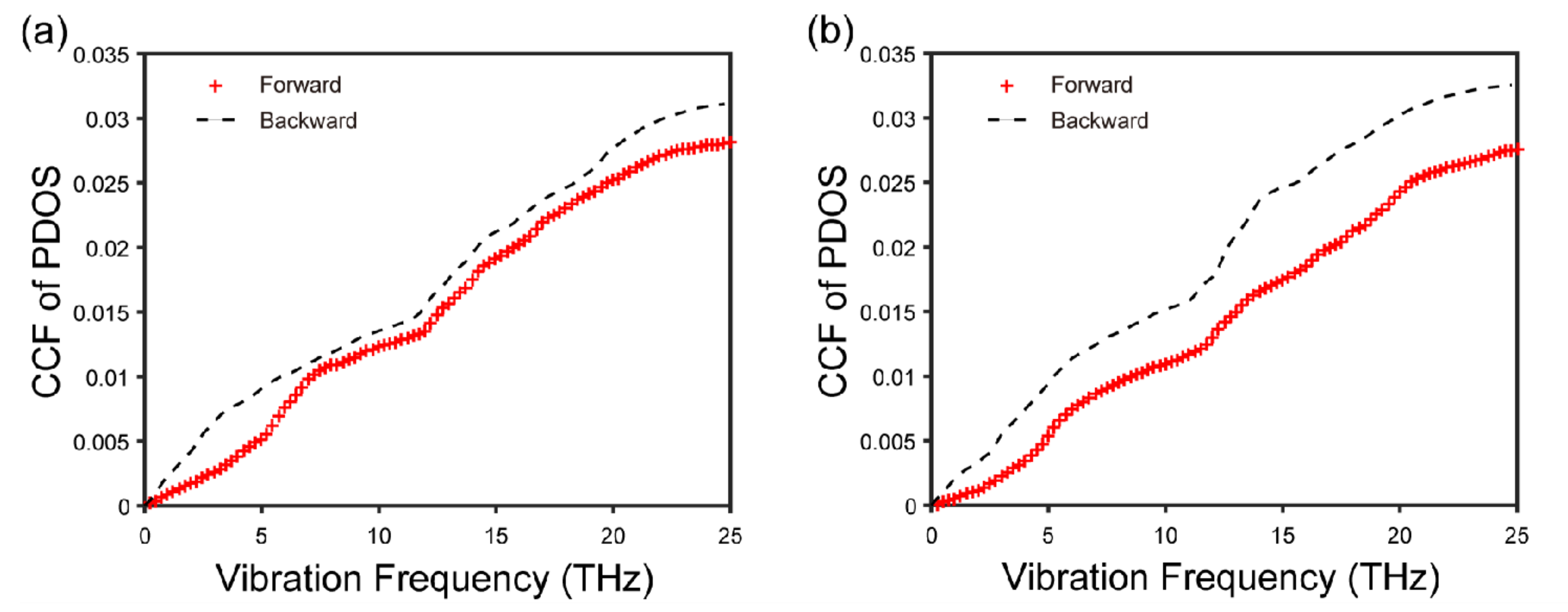
| Data | Ref [35] | Ref [36] | This Work |
|---|---|---|---|
| Thermal resistance (Km2/W) | 2.6 × 10−10 | / | 2.2 × 10−10 |
| Thermal conduction (MW/mK) | / | 752.7 * | 1138.5 |
| Thermal conduction (MW/m2K) | / | / | 4554 |
Publisher’s Note: MDPI stays neutral with regard to jurisdictional claims in published maps and institutional affiliations. |
© 2022 by the authors. Licensee MDPI, Basel, Switzerland. This article is an open access article distributed under the terms and conditions of the Creative Commons Attribution (CC BY) license (https://creativecommons.org/licenses/by/4.0/).
Share and Cite
Sun, H.; Jiang, Y.; Hua, R.; Huang, R.; Shi, L.; Dong, Y.; Liang, S.; Ni, J.; Zhang, C.; Dong, R.; et al. Graphene and 2D Hexagonal Boron Nitride Heterostructure for Thermal Management in Actively Tunable Manner. Nanomaterials 2022, 12, 4057. https://doi.org/10.3390/nano12224057
Sun H, Jiang Y, Hua R, Huang R, Shi L, Dong Y, Liang S, Ni J, Zhang C, Dong R, et al. Graphene and 2D Hexagonal Boron Nitride Heterostructure for Thermal Management in Actively Tunable Manner. Nanomaterials. 2022; 12(22):4057. https://doi.org/10.3390/nano12224057
Chicago/Turabian StyleSun, Huibin, Yunlei Jiang, Renjie Hua, Runhua Huang, Lei Shi, Yuan Dong, Suxia Liang, Jing Ni, Chi Zhang, Ruoyu Dong, and et al. 2022. "Graphene and 2D Hexagonal Boron Nitride Heterostructure for Thermal Management in Actively Tunable Manner" Nanomaterials 12, no. 22: 4057. https://doi.org/10.3390/nano12224057
APA StyleSun, H., Jiang, Y., Hua, R., Huang, R., Shi, L., Dong, Y., Liang, S., Ni, J., Zhang, C., Dong, R., & Song, Y. (2022). Graphene and 2D Hexagonal Boron Nitride Heterostructure for Thermal Management in Actively Tunable Manner. Nanomaterials, 12(22), 4057. https://doi.org/10.3390/nano12224057








